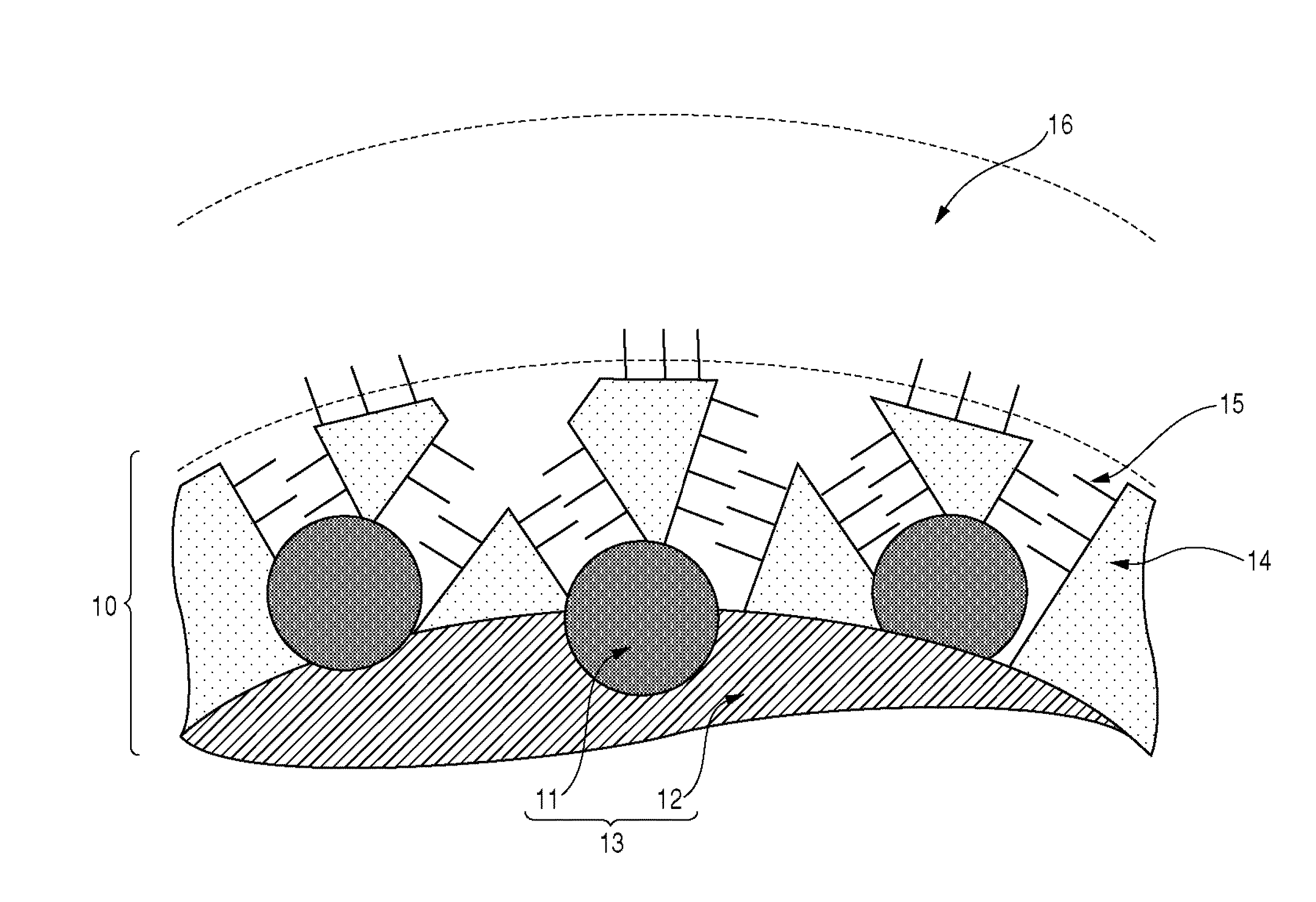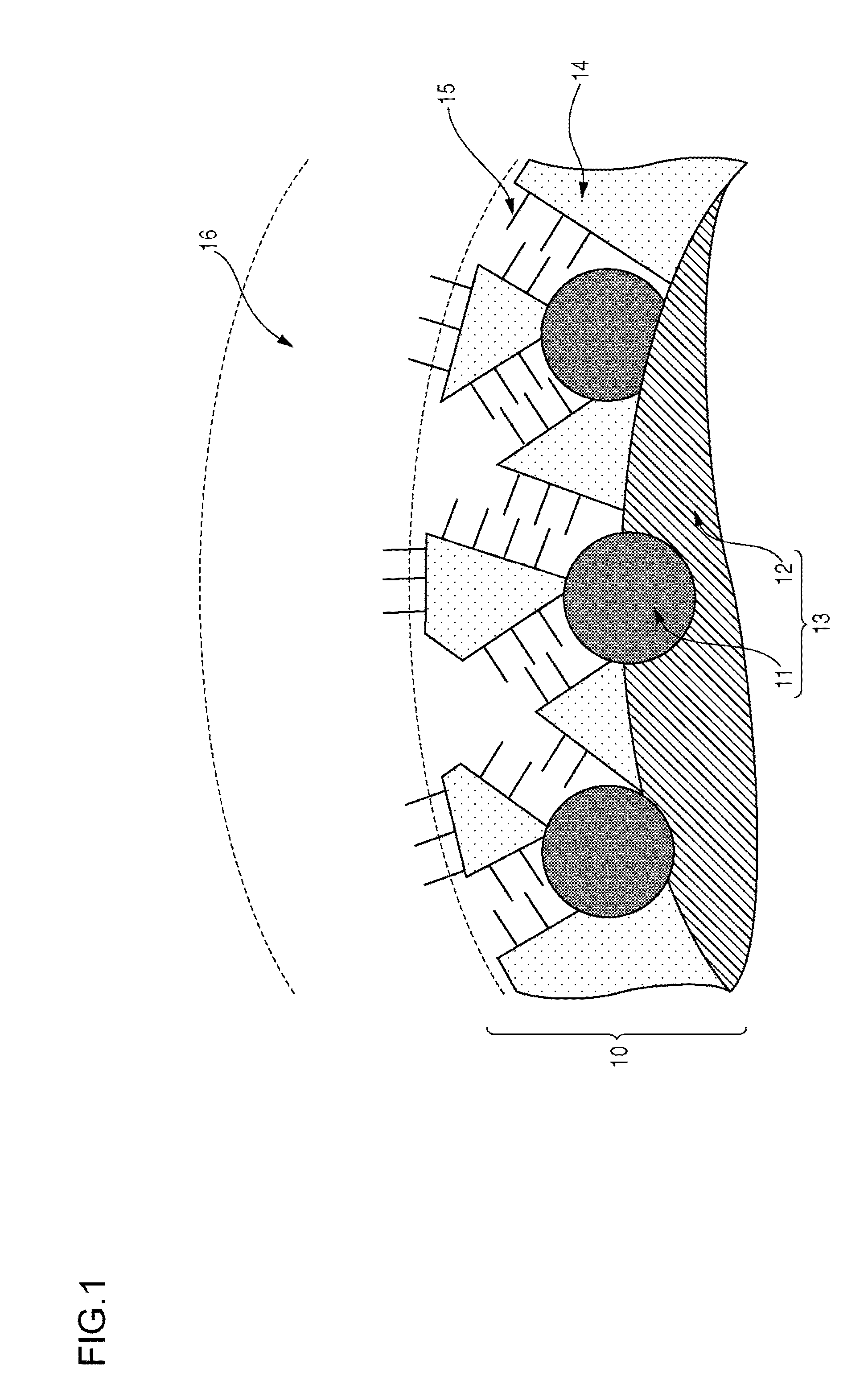Electrode material, membrane-electrode assembly, fuel cell stack, and method for manufacturing electrode material
a technology of electrode material and membrane electrode, which is applied in the field of electrode material, can solve the problems that the elution of catalyst metal cannot be suppressed in sufficient time, and achieve the effect of improving the durability of the electrode material used for fuel cells, electrolysis cells and the lik
- Summary
- Abstract
- Description
- Claims
- Application Information
AI Technical Summary
Benefits of technology
Problems solved by technology
Method used
Image
Examples
first exemplary embodiment
(1) Process of Fabricating an Electrode Catalyst Having an Active Catalyst Supported on a Conductive Support
[0088]PdCl2 and carbon black (CB) were dispersed into deionized water, and the solution was subjected to an ultrasonic process for 30 minutes at 60° C. and then dried up. The sample thus obtained was dried overnight at 60° C. and then subjected to a hydrogen reduction at 350° C. The sample thus obtained will be referred to as “Pd / CB” hereinafter. The density of Pd in the Pd / CB as measured by the thermogravimetric analysis was 28 wt %.
(2) Process of Coating Part of an Electrode Catalyst with a Porous Inorganic Material
[0089]The Pd / CB obtained by the above-described process was dispersed into deionized water, and the solution was subjected to an ultrasonic process for 5 minutes at 60° C. Next, the pH of the solution was adjusted to about 10 by adding triethylamine, and then 3-aminopropyltriethoxysilane was added and the solution was stirred for 30 minutes at 60° C. Next, tetraet...
second exemplary embodiment
(1) Process of Fabricating an Electrode Catalyst Having an Active Catalyst Supported on a Conductive Support
[0091]Pd / CB was obtained according to the process performed in (1) of the first exemplary embodiment.
(2) Process of Coating Part of an Electrode Catalyst with a Porous Inorganic Material
[0092]SiO2 / Pd / CB was obtained according to the process performed in (2) of the first exemplary embodiment.
(3) Process of Modifying the Pore Surfaces of a Porous Inorganic Material by a Basic Functional Group
[0093]The SiO2 / Pd / CB obtained by the above-described process was dispersed into toluene, and the solution was subjected to an ultrasonic process for 5 minutes at room temperature. Next, 3-aminopropyltetraethoxysilane was added, and the solution was stirred for 120 minutes at room temperature. Then the sample was taken by centrifugal separation and then dispersed into methanol / water (methanol: 80 vol %). Then the solution was stirred for 30 minutes at room temperature so as to be cleaned. The...
third exemplary embodiment
(1) Process of Fabricating an Electrode Catalyst Having an Active Catalyst Supported on a Conductive Support
[0096]RuCl2-nH2O and carbon black (CB) were dispersed into deionized water, and the solution was subjected to an ultrasonic process for 30 minutes at 60° C. Then KOH aqueous solution (KOH: 10 mM) was dropped until the pH of the solution became about 9, and the solution was stirred for 120 minutes at 60° C. Then the sample was taken by centrifugal separation and then dispersed into deionized water. Then the solution was stirred for 120 minutes at room temperature so as to be cleaned. Then after the similar cleaning or washing is repeated twice, the sample was taken by centrifugal separation and dried overnight at 120° C. The sample thus obtained will be referred to as “RuO2-x / CB” hereinafter. The density of RuO2-x in the RuO2-x / CB as measured by the thermogravimetric analysis was 35 wt %.
(2) Process of Coating Part of an Electrode Catalyst with a Porous Inorganic Material
[0097]...
PUM
 Login to View More
Login to View More Abstract
Description
Claims
Application Information
 Login to View More
Login to View More - R&D
- Intellectual Property
- Life Sciences
- Materials
- Tech Scout
- Unparalleled Data Quality
- Higher Quality Content
- 60% Fewer Hallucinations
Browse by: Latest US Patents, China's latest patents, Technical Efficacy Thesaurus, Application Domain, Technology Topic, Popular Technical Reports.
© 2025 PatSnap. All rights reserved.Legal|Privacy policy|Modern Slavery Act Transparency Statement|Sitemap|About US| Contact US: help@patsnap.com



